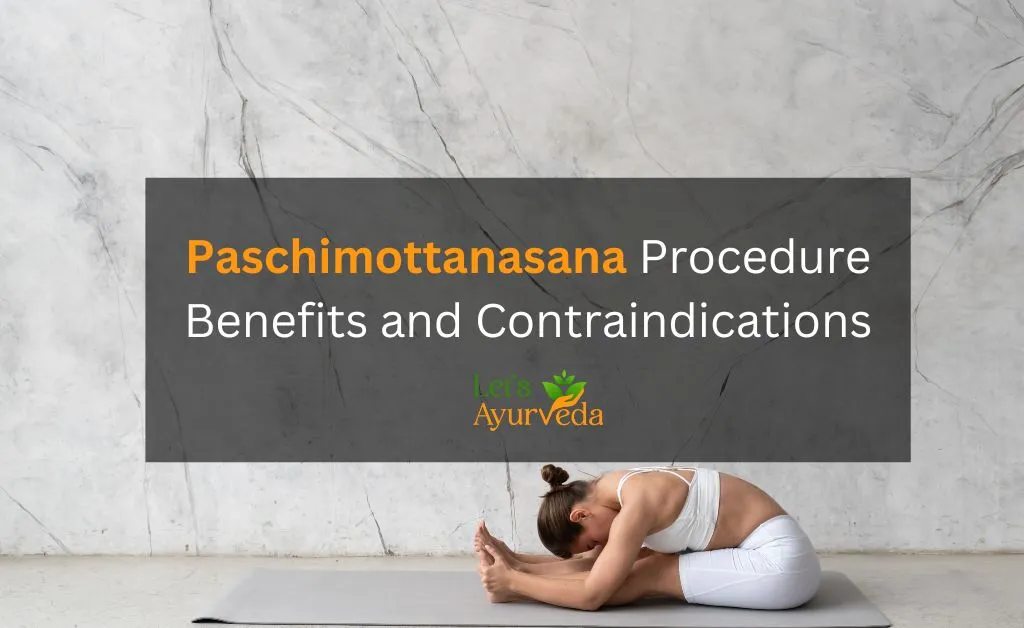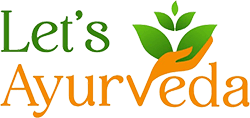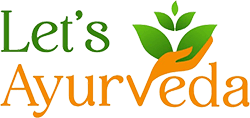Paschimottanasana, also called Seated Forward Bend or Intense Dorsal Stretch, holds a revered position in yoga. This seemingly straightforward asana unfolds many physical and mental benefits, making it an integral part of any comprehensive yoga practice.
In this complete guide, we will explore the step-by-step procedure of Paschimottanasana, delve into its manifold benefits, and shed light on crucial contraindications to ensure a safe and enriching practice.
Procedure
Paschimottanasana, a seated forward bend, primarily targets the muscles along the back, spine, and hamstrings. To perform this asana correctly, follow these detailed step-by-step instructions:
Starting Position:
-
To start, sit on the floor with your legs extended straight before you.
-
Ensure your spine is erect and your toes flexed towards you.
Inhale:
-
Inhale deeply as you develop your arms overhead, elongating your spine and creating space between each vertebra.
Exhale:
-
On the exhale, initiate the forward bend by hinging at your hips and reaching forward with your hands.
-
Maintain a straight back, avoiding any rounding of the spine.
Alignment:
-
Keep your back as straightforward as possible to maximize the stretch along the spine.
-
Engage your core muscles to intensify the stretch in the hamstrings.
Hold:
-
To get the most out of your pose, hold it for at least 30 seconds to 1 minute while maintaining steady and controlled breathing.
Release:
-
Inhale profoundly and gradually release the pose, returning to the initial seated position.
Benefits
Paschimottanasana offers comprehensive benefits that contribute to physical and mental well-being. Incorporating this asana into your regular yoga practice can yield the following positive outcomes:
- Spinal Flexibility: Paschimottanasana promotes the flexibility of the entire spine, aiding in better posture and relieving tension in the back.
- Improved Hamstring Flexibility: Regular practice of this asana enhances the flexibility of the hamstrings, reducing the risk of lower back pain and enhancing overall mobility.
- Stress Reduction: The forward bend in Paschimottanasana calms the mind, reducing stress and promoting mental relaxation.
- Stimulation of Abdominal Organs: The compression of the abdomen in this pose stimulates digestive organs, promoting healthy digestion and potentially alleviating minor digestive issues.
- Alleviation of Fatigue:Paschimottanasana helps soothe the nervous system, reducing fatigue and rejuvenating the body and mind.
Contraindications
While Paschimottanasana offers many benefits, it may only be suitable for some. Individuals with the following conditions should approach the pose with caution or avoid it altogether:
- Severe Back Injuries: Individuals with severe back injuries or herniated discs should exercise caution when practising Paschimottanasana. They may need to modify the pose to suit their condition.
- Pregnancy: Pregnant women, especially those in the later stages of pregnancy, should modify the pose to avoid undue pressure on the abdomen.
- Sciatica: Those suffering from sciatica should approach Paschimottanasana cautiously, and a modified version with props may be more suitable to prevent exacerbating the condition.
- Hamstring Injuries: Individuals with acute hamstring injuries should avoid deep forward bends until the injury has sufficiently healed.
- High Blood Pressure: People with uncontrolled high blood pressure should exercise caution, as the forward bend in Paschimottanasana can temporarily increase blood pressure levels.
FAQs
Is Paschimottanasana suitable for beginners?
Yes, Paschimottanasana can be practised by beginners with modifications. Listening to your body and gradually working towards a deeper stretch is crucial.
How can I deepen my stretch in Paschimottanasana?
To deepen the stretch, focus on engaging your core, reaching forward with a straight back, and gradually working towards holding your feet. Regular practice will also contribute to increased flexibility.
Can Paschimottanasana help with back pain?
Yes, Paschimottanasana can be beneficial for alleviating back pain by stretching and strengthening the muscles along the spine. Individuals with severe back issues should consult a healthcare professional before incorporating it into their routine.
Are there variations of Paschimottanasana for different skill levels?
Yes, variations and modifications of Paschimottanasana exist, including props like a yoga strap or blocks to accommodate different skill levels and body flexibility.
How often should I practice Paschimottanasana for maximum benefits?
Aim to practice Paschimottanasana 3-4 times a week for optimal benefits. Consistency is critical, but it's essential to be mindful of your body's limitations to avoid overexertion.
Conclusion
Paschimottanasana, with its simplicity and profound impact, stands as a testament to the transformative power of yoga. By incorporating this asana into your routine while being mindful of contraindications, you can unlock many benefits for your physical and mental well-being.
Whether you are a beginner or an experienced practitioner, Paschimottanasana beckons you to embrace the journey towards a healthier and more balanced life through yoga.
Note: Before embarking on your Paschimottanasana journey, it is crucial to note that individual health conditions vary. It is advisable to consult with a qualified yoga teacher or your healthcare professional before incorporating this asana into your routine. They can provide personalized guidance, ensuring a safe and effective practice tailored to your needs.






